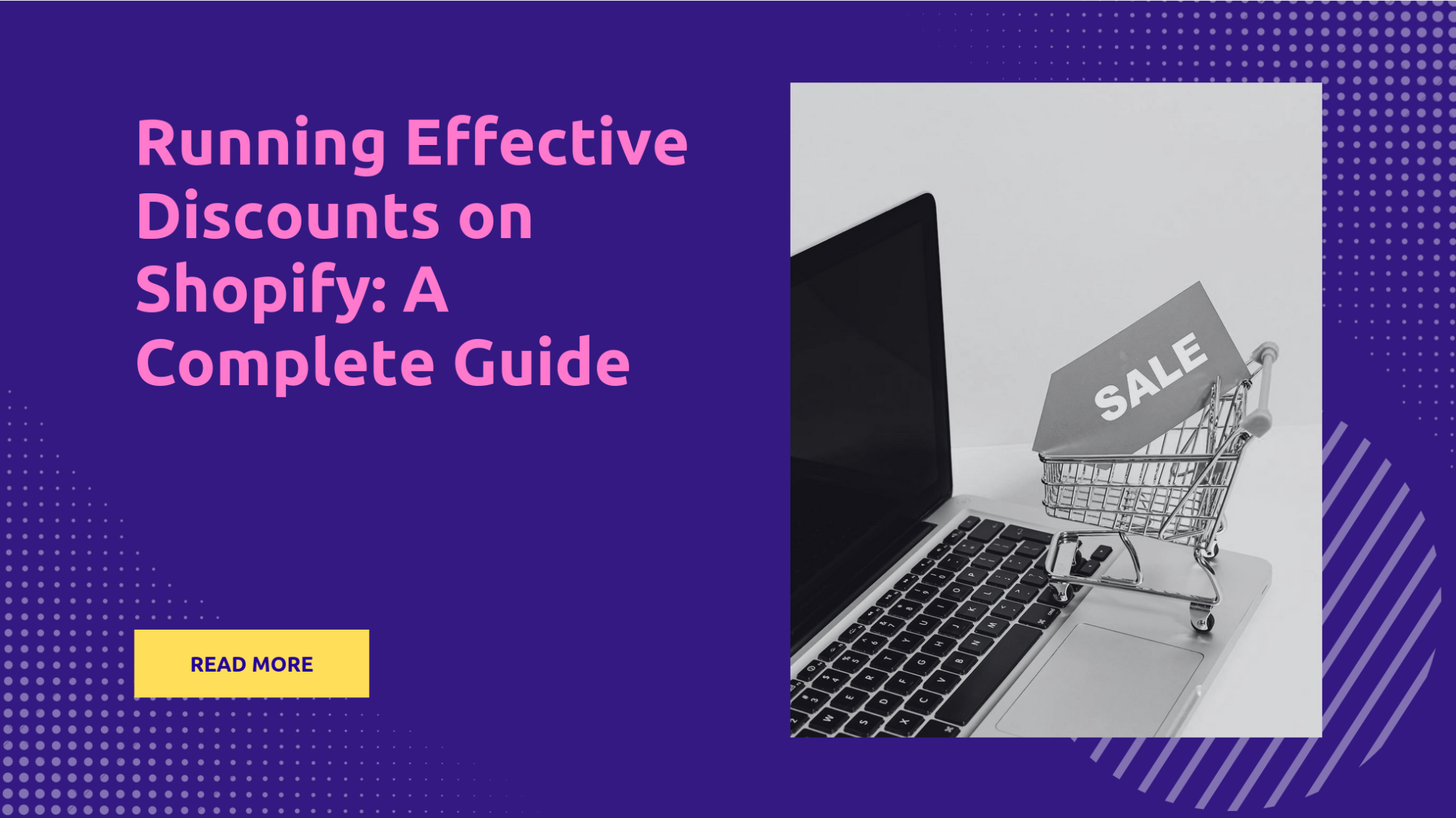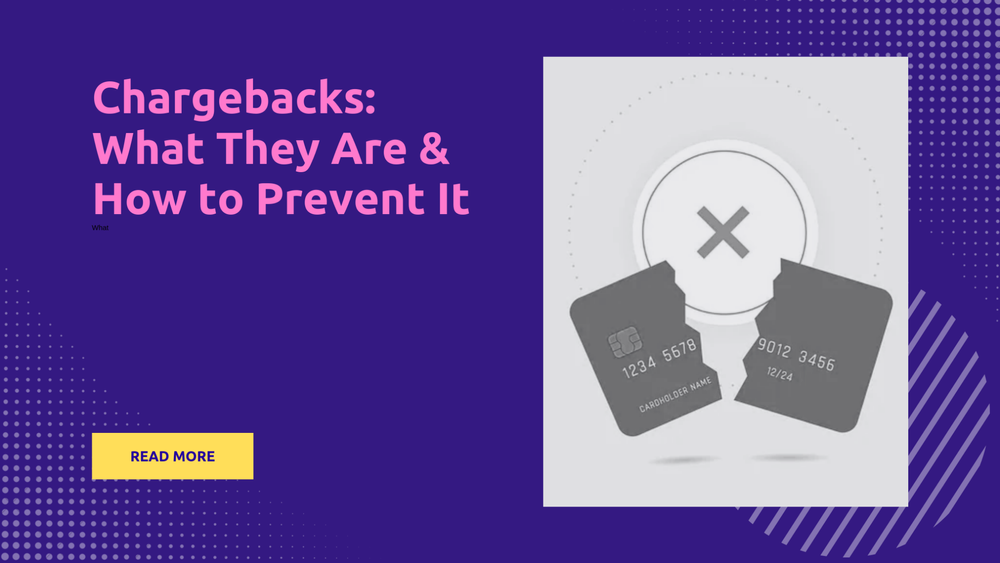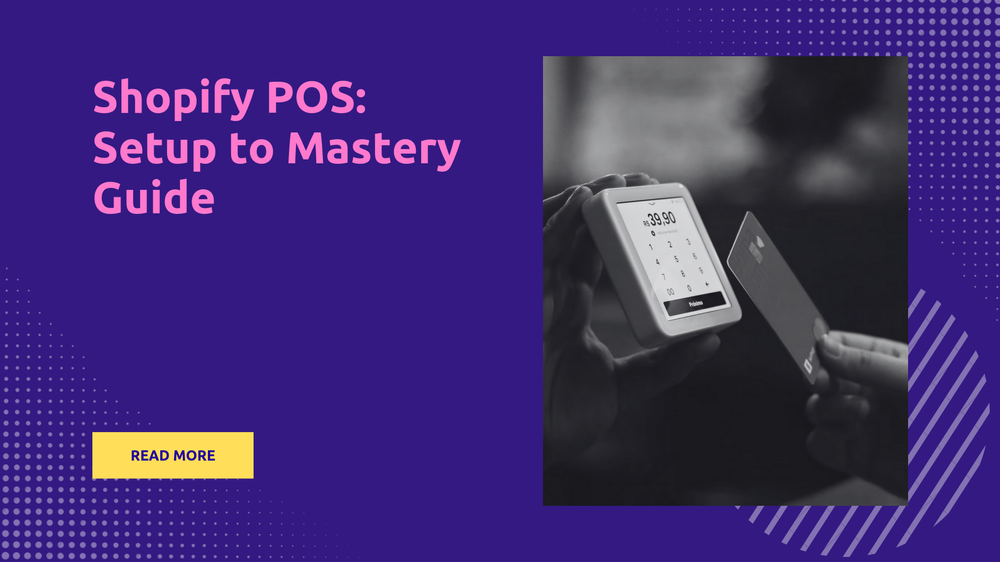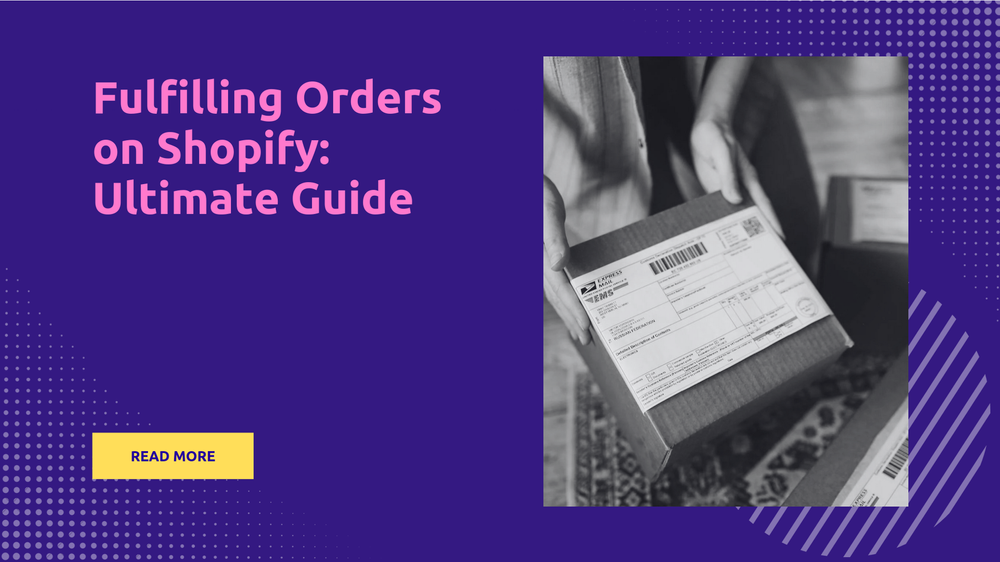Discounting Done Right: Doing Effective Promotions on Shopify
By Abhishek Sebin on

Discounts. They're a staple of the e-commerce world, and if you're running a Shopify store, you're probably using them. But are you using them effectively? It's easy to fall into the trap of just slashing prices, hoping for a quick sales boost. But you can do better than that - a well-planned discount strategy can be a powerful tool for growing your business, attracting new customers, clearing out old stock, and fostering customer loyalty.
This article dives deep into the world of Shopify discounts, exploring the different types, the best strategies, and how to avoid common pitfalls. By the end of this article, you'll have a clear understanding of how to use discounts to your advantage. Onwards!
Types of Discounts
Discounts are a powerful tool for boosting sales and getting customers excited on your Shopify store. But it’s not just about lowering prices—it’s about understanding which discounts work best and when to use them. Let's explore some of the most popular discount options:
Percentage Discounts
These discounts take a certain percentage off the price. Think of it like a "20% off" sale. They're flexible and can be used on pretty much any product. They're especially helpful when you’re trying to clear out old stock or during a big sale.
On Shopify, you can apply them to certain collections or products, set minimum spend limits, and choose who can use them, how many times, and when they're active. A good tip is to show both the original price and the discounted price clearly, and make the percentage feel significant to the customer (like 20% or 25%).
Fixed Discounts
Fixed discounts take a specific dollar amount off the price. For example, "$10 off". They tend to work best on lower-priced items where that discount feels like a bigger saving.
Like with percentage discounts, you can set these up on Shopify to apply to specific products or collections, set minimum spends, and control usage and eligibility. A $10 discount on a $50 item can feel more impactful than a 20% discount. Shopify lets you set these up as either "Amount off products" or "Amount off orders".
Free Shipping
Who doesn't love free shipping? It's a great incentive to get people to finish their purchase. It works best when offered with a minimum spend, pushing customers to buy a little bit more.
You can offer free shipping to specific customer groups based on location, purchase history, or tags. You can also offer free shipping discounts via codes.
Bundle Discounts
Bundle discounts are applied when customers buy a group of products together. This is effective when you group related items and offer a saving compared to buying them separately. Think of a "buy these three together and save" kind of deal.
You could also use tiered discounts for bundles, where customers save more by spending more. Always clearly show the discount and savings, and consider using automatic discounts for less hassle. Check out our product bundling guide to dig deeper.
Seasonal Discounts
Seasonal discounts are all about timing. Think of holidays or special times of the year, like Black Friday, Christmas, or the start of a new season. Before setting these up, decide on your goals and check what your competitors are doing.
Promote these discounts via email, social media and website banners. Time-based discounts can also help maximize impact.
Referral Discounts
Referral discounts are a way to get your current customers to bring in new ones. You reward both the existing customer and the new one. This could be a discount for the referrer’s next purchase, a discount for the referred customer, or even a free gift after a successful referral.
You can manage these in Shopify using third-party apps or custom code. Keep track of usage and tag customers to ensure the right people get the right discount.
Loyalty Discounts
Loyalty discounts are all about rewarding repeat customers and building those long-term relationships. There are many ways to do this. You could set up a membership discount, offer value-added discounts, or implement a loyalty program with tiered discounts. Also, think about offering discounts in exchange for newsletter sign-ups. It’s a great way to engage.
Best Discount Strategies and Tactics
Let’s get into the nitty-gritty of some specific discount strategies and how to use them best on your Shopify store:
Discount Codes: The Classic Approach
Discount codes are like the old reliable of the discount world—they're easy to share, which means your customers can become your promoters by passing them on to friends. They can also make shoppers feel like they're part of an exclusive club with special deals, and they're a great way to collect valuable customer data when used as part of a newsletter. When used wisely, discount codes can actually make your products feel more valuable, encourage people to spend more, and build customer loyalty.
However, discount codes aren't without their drawbacks. Customers have to manually type them in, which can be a bit of a pain. Also, your customization options might be limited compared to other discount types. Generally, automatic discounts tend to work better because they are easier for the customer to use.
Abandoned Cart Discounts: The Second Chance
Abandoned cart discounts are designed to rescue those customers who added items to their cart but didn't check out. These are essentially nudges to get them to come back and complete their purchase. You'll often see these sent via email, text, or even push notifications, offering that little extra incentive to seal the deal.
There are several abandoned cart apps on the Shopify App Store to help you get started quickly.
Flash Sales
Flash sales are all about creating a buzz with big discounts offered for a limited time only. This approach is designed to create a sense of urgency, pushing customers to make a quick buying decision for fear of missing out on the deal.
To do flash sales well, the discounts have to be genuinely appealing, the sale can't linger too long, you've got to shout about it everywhere, and make sure everything on your Shopify store runs smoothly. Shopify apps can be a big help, and it's often a good idea to create a special page just for the sale to keep things focused.
Free Gift with Purchase
Free gifts are a fantastic way to make your products even more attractive by adding that extra something. This tactic is a great way to entice customers by sweetening the deal and making them feel like they're getting more than they paid for.
Free Shipping
Offering free shipping once a customer hits a certain spending amount can encourage them to add a little more to their cart. It’s a way of pushing people to spend more so they can avoid those shipping costs. When figuring out that minimum spending threshold, you’ll need to consider factors like average order value, your own profit margins, and conversion rates. This might involve a bit of trial and error to find the sweet spot.
First-Time Customer Discounts
First-time customer discounts are all about drawing in those new shoppers and giving them a compelling reason to buy. You really want that initial offer to be tempting so they decide to make their first purchase. You can set this up either as an automatic discount or by using a code. Be sure to experiment with different discount types.
Tiered Discounts: Spend More, Save More
Tiered discounts are designed to make your customers want to spend a bit more in order to save a bit more on their purchase. They work by offering bigger discounts as a customer's spending increases.
Which Discount Strategy is Best?
The best discount strategy depends on what you're trying to accomplish. Let's have a look at each below.
Getting Attention
Use discount codes as they are easy to share on social media.
Offer discounts for abandoned carts to remind customers to complete their purchase.
Create flash sales for generating buzz and urgent purchases.
Surprise loyal customers with random discounts to boost engagement.
Increasing Profits
Offer steep discounts to first-time buyers to increase adoption.
Achieve economies of scale by undercutting competition. Deep discounts can help you grab a larger chunk of the market.
Implement subscriptions to increase repeat sales.
Offer product bundles at a reduced combined price.
Use discounts in upsells or cross-sells. Postship has powerful upsell features that boosts revenue by upto 16%.
Keeping Customers
Offer membership benefits to encourage retention.
Reward repeat purchases and loyalty with exclusive discounts.
Getting Rid of Old Stock
Offer 'buy one get one' deals on slow-moving items.
Create bundles that combine less popular items with popular ones.
Run clearance sales to attract bargain hunters.
Discount seasonal items to clear them out before the season ends.
Promoting New Products
Offer introductory lower prices on new products.
Bundle new products with existing ones at a discount.
Create buzz by rolling out new products to your most loyal customers first.
The discount strategy you end up choosing will depend on your goals. The list above should give you a comprehensive picture.
Discounting Zero to Hero Guide
With all the theory out of the way. Let's get down to applying discounts in practice.
1. Start With a Clear Goal
Don't just throw discounts out there randomly. Before you even think about a discount, ask yourself: what do I want to achieve? It's not just about making more sales. Do you want to grab the attention of potential customers, make more profit, keep current customers happy, clear out old items, or promote a new product? Your discounts need to boost revenue and also build customer loyalty, encourage repeat purchases and attract new customers.
2. Know Your Customer's Value
How much is a customer worth to you over time? This should impact your discounts. Offer your loyal high-value customers better, personalized discounts. For new customers, keep the discounts reasonable, but do make them appealing. Think of discounts as a good way to keep your best customers coming back.
Say you're selling footwear. It's a good idea to offer higher discounts on replenishable items like socks and shoe polish. Even if you end up making lower profits per shoe polish, your overall profits will increase because of the boost in purchases. For certain categories like beauty, it also makes sense to complement discounts with some kind of loyalty program.
3. Choose the Right Items to Discount
Choose carefully what you discount. Look at profit margins and your customers’ buying habits. Don't discount poorly selling items, instead focus on new products or old stock. Consider which items will create repeat purchases, or the ones where price-sensitive customers are most responsive.
Let's say you're selling hair products. You could either discount the brush or the oil: which should you choose?
Think about it. A brush lasts a long time, so if the goal is to increase repeat purchases you probably shouldn't discount the brush. On the other hand, oil is a consumable product, meaning customers will purchase it again and again. Offering a steep discount on the oil for first-time buyers could encourage customers to try it out and lead to long-term adoption. Another strategy might be to give away a free oil sample with every hair brush, this way you can convert even more first-time buyers.
4. Promote your Promotions
Just setting a discount isn't enough. You need to get the word out there! Market your discounts on multiple channels: send email campaigns to previous buyers and newletter subscribers, post discount codes on social media, and add banners on your website. Don't forget to use shareable discount links to make it easier for them.
Craft your promotional message based on your target audience. This increases the chance that customers will find the discount appealing and want to take advantage of it. For example, if you suspect your audience is price-sensitive, use the word "save"; on the other hand, if your audience is in a festive spirit, tweak your message accordingly.
5. Evaluate Your Progress
It's really important to keep an eye on the effect your discounts are having. Look at the numbers – how many people are redeeming them, your total sales, the average spend, how many new customers you got, if people are sticking around, if they're leaving stuff in their cart, and of course, your profit. This is key.
Shopify Admin lets you see the number of times a discount code was used, which should cover you for 90% of cases. Alternatively, you install dedicated analytics apps on Shopify to get richer reports.
Bonus: Track Competitors
Keep an eye on what your competitors are doing. Check their websites for pop-ups, banners, and discount codes. Sign up for their newsletters, and see what they're doing on social media. You can even check coupon websites. What kinds of discounts do they use? When do they run them? How do they get the word out? Do they ever let people stack up the discounts? Shopify has a great blog about it here.
Common Mistakes
Pros and Cons of Discount Pricing
Using discounts can be a great way to boost your Shopify store, but it’s not all good news. There are pros and cons you need to understand:
The Upsides of Discounts
- Sales Boost: Discounts can make people feel like they need to buy right now because they might miss out. They also make shoppers think they’re getting a great deal. All of these can persuade them to buy more. And they can get people to finish purchases, reduce abandoned carts, and get customers talking about the sale.
- Getting New Customers: First-time buyer discounts, deals on new items, and free shipping on higher orders can all bring in new customers. You can also advertise deals by email, social media, or website banners to reach more buyers.
- Clearing Old Stock: Discounts like bundles, BOGO offers, flash sales, and seasonal discounts can help you clear out old items quickly and manage your stock better.
The Downsides of Discounts
- Discounts can make your brand look cheap. If you have sales all the time, customers will start to see your products as low quality. It damages your credibility. They may stop buying full price as they expect a sale.
- Discounts eat into your profits. Sales mean less money on each item, which means less money for you, especially if discounts are big or frequent.
- Sometimes, discounts can be too good, meaning you actually lose money. Deep discounts, free gifts and BOGO deals can end up costing you more than you’ll make. Sometimes, this is a strategic decision, but you need to be careful.
- Your customers might start to only buy when you have a sale. This makes them less loyal. They might also wait for the next sale, losing their desire to buy at the current price. This can also mean you attract lower value customers that only care about the discount.
Don't Overdo Discounts
Avoid Frequent Deep Discounts: You don't want to give the impression that everything is always cheap.
Strategic Discounts: Only offer deals if you're struggling to make sales. Making an already popular product cheaper rarely improves conversion rates.
Value and Customer Experience: Focus on quality, service, and make customers feel good about buying from you.
Don't Just Rely on Discounts: Don't let discounts be the only way to drive sales. Supplement it with other tactics like gamification and shoppable videos.
Build Brand Loyalty: Don't let price be the main focus. Focus on brand value, community, and long-term engagement.
Membership Programs: Make loyal customers feel appreciated and keep them engaged with an exclusive club.
How to Keep Profits Up
Track Competitors: See what other businesses are offering and match it. What you lose in margins is made back with the increased volume.
Pick the Right Products: Not everything should be on sale all the time.
Discounts as an Investment: View discounts as a way to build your business and get new customers, not just temporarily boost sales.
Good Customer Experience: A better customer experience like branded tracking pages can make people feel better about the value you offer and be less reliant on discounts.
Adjust Prices: Consider adjusting prices for specific product lines and be ready to adjust pricing after using discounts.
A/B Test: You may be able to get away with lower discounts than you thought. Start with big discounts (eg., 30%) and start slowly lowering them until you notice a significant drop in conversion rates.
Don't Just Rely on Discounts
Think of discounts like a catchy jingle – they can grab attention, but you don't want them playing on repeat until everyone's tired of hearing them. Excessive discounts cheapen your product and cause customers to stop trusting your brand.
You need to run discounts alongside other strategies to increase sales. Consider the power of shoppable videos, for example. Imagine a customer landing on your page and seeing a dynamic video showcasing your product in action. That’s the power of shoppable videos. It's like letting customers experience the product firsthand, building trust and desire far beyond what a static image or discounts can achieve.
Shopify apps like InstaVid make this easy. Simply import your best Instagram or TikTok content and turn it into engaging, shoppable experiences right on your store. Get started in just 3 steps:
- Install InstaVid Shoppable Videos from the Shopify app store.
- Import your videos from Instagram or TikTok in one click, or upload videos manually.
- Add the widget to your storefront and watch your engagement increase.
And the experience doesn't end when the "buy" button is clicked. What happens after is just as crucial. Instead of sending customers off to a generic tracking page, why not keep them engaged on your own website with a branded tracking page? It's prime real estate where you can promote other products they might love.
Apps like Postship Order Tracking Upsell can help you turn a simple tracking page into an opportunity to increase your bottom line with smart upsells. Merchants have reported up to 16% increase in revenue.
While discounts have their place, make sure they're part of a larger strategy that keeps your customers coming back for more than just the sale price.
Conclusion
Discounts, when used strategically, are a powerful tool for any Shopify store. They can attract new customers, clear out old inventory, and boost sales. But it's not just about randomly slashing prices. It's about understanding the different types of discounts, choosing the right ones for your specific goals, and then making sure they're promoted effectively. From percentage and fixed discounts to free shipping, bundles, and loyalty programs, there's a whole range of options to explore. The key is to align your discount strategy with your overall business objectives, and to understand your customers and their buying habits.
However, it’s also vital to be aware of the potential pitfalls. Over-reliance on discounts can cheapen your brand, train customers to only buy during sales, and ultimately eat into your profit margins. It's about finding the balance. You need to use discounts as a strategic tool, not a crutch. It means tracking your progress, being flexible, and making adjustments as needed. Don't just copy what your competitors are doing, think about what works best for your specific brand and your target audience.
Ultimately, the goal is to use discounts to build a sustainable, thriving business. Don't just chase short-term sales boosts. Instead, focus on creating long-term value, fostering customer loyalty, and building a brand that customers appreciate, discounts or not. By doing your homework, understanding your customers, and using discounts strategically, you can unlock the true potential of your Shopify store and achieve your business goals.




